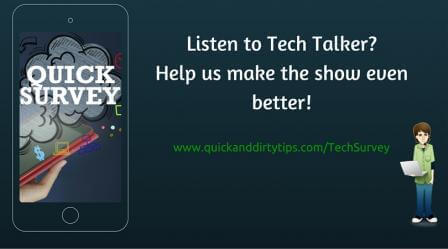How to Securely Browse the Internet
Ensure you’re being secure and safe when you browse the web.
Last week I talked about phishing emails and what to look out for. This week, I’m going to cover a similar topic on how to browse the Internet safely and easily.
Computers, phones, and tablets can connect you to billions of other devices all around the world, and even in space, and not all of them are friendly.
Surfing the web is kind of like walking through town: as long as you don’t go down any dark allies or to any sketchy corners, you’ll do just fine. Now let’s talk about just what a dark ally of the Internet looks like.
Your Web Browser
For the sake of brevity, I’m going to discuss safe web browsing from your computer. If you want to know more about safe phone browsing we can discuss that in a later episode, just be sure to let me know by commenting on the Tech Talker Facebook Page!
No matter what operating system you’re using, my go-to web browser is Google Chrome. It is fast, updates automatically, and is one of the most secure web browsers. Plus, it’s completely free. I like Google chrome for many reasons, but its best feature is that it works on every operating system.
This is important because that means, as a Mac user, you can easily use Google Chrome on a Windows computer without having to learn a completely new web browser. What does this mean? Safari, which comes with Mac computers, and Internet Explorer, which comes with Windows computers, are unique to each operating system. But Chrome is universal.
Google is also extremely responsive to fixing bugs and vulnerabilities. In some cases, Chrome will prevent you going to websites it knows to have viruses or malware. This is definitely good thing: it’s kind of like having airbags, and anti lock brakes on your car.
HTTPS (Secured websites)
One other important step is to make sure that websites you are putting information into are encrypted with HTTPS. HTTPS often shows up as a lock on the URL of your web browser in green. For example if you visit Google.com, Facebook.com, or PayPal.com, you will see a green lock in the URL at the top of this page. This lock is then typically followed by an this means that the website you are going to is encrypted.
What does this actually mean? Check out my episode on encryption. What’s happening is that any information you submit or receive from the website can’t be seen by anybody else. This keeps information like passwords, credit card numbers, and social security numbers secret.
If a website is not using this information, then do not submit any passwords or private information to them. If you do, it’s possible for someone else to see that information. You should never have to enable https, it should just work seamlessly in the background. Most large websites have encryption on them, so it’s not something you have to worry about. However, even today there are websites that ask you to submit really private information insecurely. For example, my utility bill asks me to submit my credit card information without https. No way! That’s when I go old school and mail in a check!
Where Are the Internet Dark Allies?
I often get asked this question: “Tech Talker, what are websites I shouldn’t go to?” There are millions of websites out there and I’m not about to review all of them. Big websites that you hear of every day are definitely the most secure, websites like Google, YouTube, Facebook, Wikipedia—you name a big website and in most cases they are very safe to go to.
This is like walking down main street: everything is well lit and typically nothing bad is going to happen. However, when you click a link from one of those big websites to a lesser known website (like when you click on an advertisement). It’s like turning off onto a smaller street, a little less well-lit and well known but still probably pretty safe. It’s not until you get down to sites trying to sell pirated software, videos and music that you’re really at risk.
At this point, it’s really at your discretion. Typically websites that try to sell things at an extremely deep discount, or get you to download illicit software, pirated movies, and software, will put you at the most risk for getting malware on your machine.
Just be mindful of what websites you are looking at and if something seems too good to be true, it probably is! There is no exact science for 100% secure web browsing, but the advice I just gave you will save you from many of the pitfalls out there.
Take the Tech Talker Listener Survey!
Want to learn more about new gadgets and apps? Looking for how-to guides or troubleshooting tips? Just visit quickanddirtytips techsurvey and weigh in about the show!
And, as a special thank you, all participants will be automatically entered for a chance to win one of two awesome audiobooks—Mr. Penumbra’s 24-Hour Bookstore or The World Beyond Your Head. Again, just visit quickanddirtytips techsurvey to participate.
Be sure to check out all my earlier episodes on the Tech Talker page. And if you have further questions about this podcast or want to make a suggestion for a future episode, post them on Facebook QDTtechtalker.
Until next time, I’m the Tech Talker, keeping technology simple!








